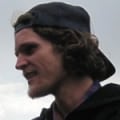Halfway across the Atlantic on my way to La Palma for Transvulcania, I am taken by a severe bout of food poisoning. I touch down in Madrid, plow through the line of bumbling, zombie-like international travelers, and make a half-hearted sprint for my connecting flight. I am slowed by customs, security, and a 20-minute train ride.
With a half hour to make my next flight, my efforts are futile. The check-in lady tells me there is nothing she can do to help and that I will need to exit the airport to rebook my flight at the Iberia ticket office. While under normal circumstances this would be frustrating, my general state of misery makes things barely tolerable. Finally reaching the ticket office, I announce, “La Palma,” place my ticket and head on the counter, and begin swaying side-to-side. Twenty minutes later, my flight is re-booked, I have an eight-hour layover and a free lunch for my troubles. Oh, and where’s the pharmacia?
The trip to La Palma started out rough, but I was certain that with a few days rest things would come around and I would be good to go by race day. Traveling internationally to race is a privilege and something I take very seriously. Much of my attention preceding an event is focused on getting in proper training for the race. However, it is easy to forget that running is usually the most straightforward and controllable part of preparation. One’s mental and emotional state play a large part in success as do other variables such as travel or managing new foods and a different climate.
Two days preceding the race, I sat at Tony’s bedside while he lay in a foetal position shivering in the sweltering heat. Despite being in the best shape of his life, the flu had cut him down, relegating him to his bed for the next week. “Man, I just wanna be home, back in high country, you know,” he commented. Oh, I know. I know exactly. Laying on my back, crippled in the Madrid airport, all I could think of was home. I disassociate home and the high country from any sort of suffering, remembering only the good and blissful, the sweet smell of pines and the sweeping mountainscapes. Little did I know I would again need to draw from this inspiration on race day.
At the start of the race, I felt feverish, my kidneys and lower back sore, my head pounding. I had caught Tony’s flu and, as I struggled up the first climb, I somehow thought I might be able to shake it. But, as the day went on, my condition worsened, compounded by the heat and challenging terrain. Any chance of being competitive was over, yet I thought to myself, I can wait, I can hurt, I can finish. Oddly, despite my setbacks, I felt a certain sense of satisfaction in knowing that there was no question I could not go on, a sort of comfort in discomfort. I pondered the question as to how exactly I had developed this particular trait to be content to simply endure. Between cold sweats and nausea, I could not make sense of it in the moment, but my answer came to me on my first run back at home.
The morning had a most delightful feel, the hills and valleys being enveloped in a thick fog, giving the air a particular mystique. Clear signs of spring popped through the grey, dreary blanket: grass greener than I have seen in years, flowers in bloom, baby birds chirping from a hole drilled in my cabin wall. I meandered around town for bit before making my way over to the Mountain Research Lab for a jaunt up Niwot Ridge. The climb started off well. I had plenty of pep in my stride and had mostly overcome any lingering flu symptoms.
I made it to the ridge with ease so I decided to make a loop out of the run, cutting down through the trees to the Sourdough Trail. I quickly ran into snow, nice hardpack for two, three hundred feet on which I enjoyed some fast glissading. Before long, though, I dipped into the forest and with each step sunk down to my knees or thighs. The thin layer of crusty ice on top of the snow cut into my shins. I hit branches under the snow that further tore into my legs. My shoe got sucked off and I slumped forward into a tree well. I let out a slew of expletives and yelled at dog, who was off chasing rabbits. At this point, backtracking seemed pointless but forward did not seem much more promising.
Immediately, I was overcome by the same sense of angst as on the plane to Madrid, a helpless feeling, with no end to my strife in sight. I remembered my race-day mantra: I can wait, I can hurt, I can finish. What choice did I have, really? I could let myself be overwhelmed by the situation, punching the snow, screaming into the wind, but for what? None of this would get me any closer to being done. Challenges such as these, however small, can seem insurmountable in the moment, flooding the senses with anger, frustration, and bringing out our limitations. Yet, with a simple change of perspective, the situation can go from seeming desperate to quite manageable.
This is where the capacity to endure initiates, in a slight shift in perspective brought out through consistent practice. The daily run is not always perfect, not always blissful, but it serves as a tool to build character. Beyond the coping mechanism, the run becomes a lens through which to see the world, changing the negative into joy, elation, love. In the moment, this is not immediately apparent, but over time as I work through challenges, big or small, the ability to endure, to find comfort in discomfort, is a powerful state of mind to nurture.















